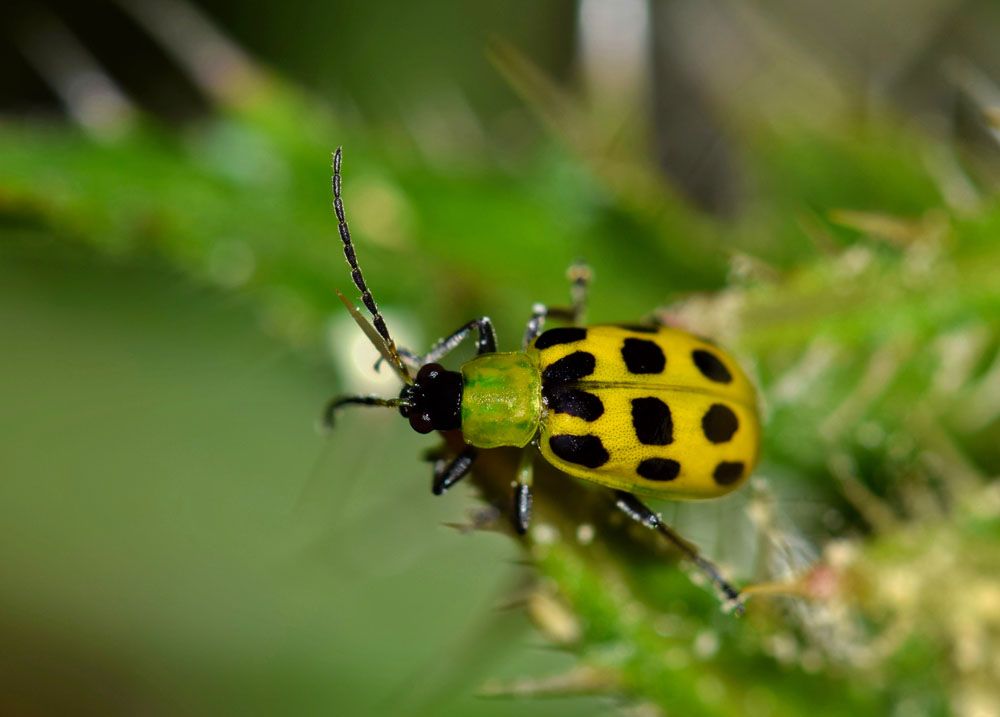
Spotted Cucumber Beetle – Southern Corn Rootworm – Diabrotica
Spotted Cucumber Beetle – Southern Corn Rootworm – Diabrotica
Scientific name: Diabrotica undecimpunctata
Common name: Spotted cucumber beetle, Southern corn rootworm
Appearance: Spotted cucumber beetles have yellowish-green body and black head with 12 black spots on the elytra. They grow up to 5.2-7.5 mm long and feature deep black antennae. Larvae are whitish-yellow, wormlike, with spines throughout their abdomen. They also have 2 characteristic projections on their anal plate.
Host plants or food: They feed on a variety of host plants, including corn, cucurbits, soybeans, peanuts, and sweet potatoes.
Territory: Throughout the United States (Mexico to Canada)
Mode of damage: Spotted cucumber beetles are leaf chewers, but they also feed on flowers, fruits, and stems. The larvae, on the other hand, are stalk bores and damage the stems and roots of the plants.
Habits and life history
Adult spotted cucumber beetle overwinters in plant debris when the temperature reaches 21°C.
They become active again when the temperature reaches over 65 F. Adult beetles are most active during the morning and late afternoon.
Female beetles lay eggs in moist soil at the base of the plant. They can lay up to 1200 eggs on average during their lifetime.
Eggs hatch into larvae in about 6-9 days, which feed on the roots, stem, and fruit rinds at the base of the plant. The larval stage lasts for 2-3 weeks, after which the larva turns into an adult.
They produce 1-3 generations per year.
